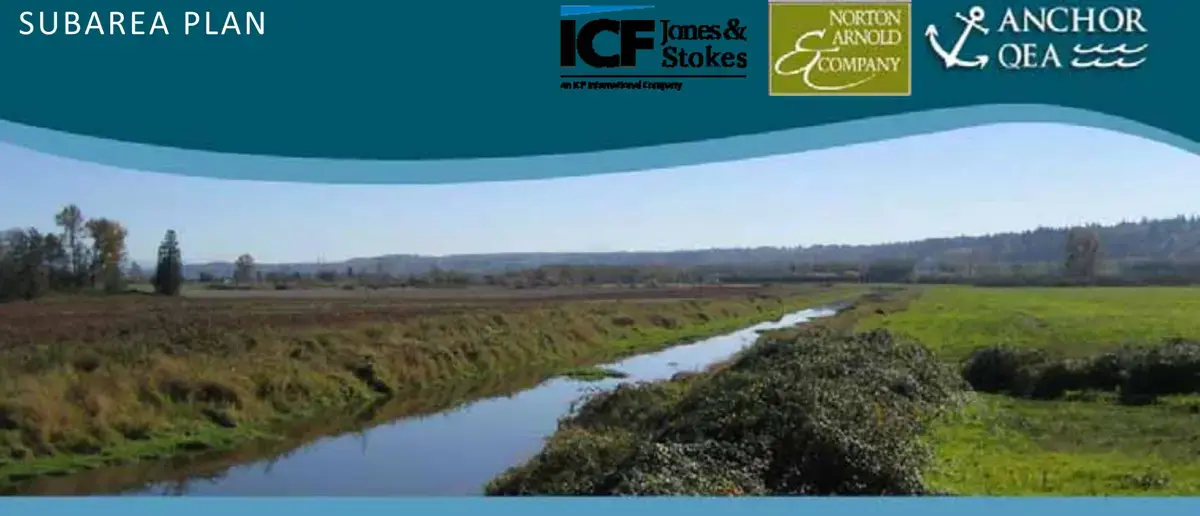2009 Marshland Subarea Plan
|
Jun 2 |
by admin

The Marshland Subarea plan, a funded study sponsored by the city of Everett, is one of the last opportunities for a large-scale tidal wetland restoration among the main stem of the Snohomish River. This plan suggests using Wood Creek as the main source of water to restore foraging habitat for Chinook and other salmon smolts. This plan also recommends connecting Wood Creek and other drainages from the adjacent hillside into restored tidal wetlands to enable restoring fish access to streams; adding fish access to an area of preserved forested wetland habitat; restoring multiple non-tidal freshwater wetland areas; and riparian buffer enhancements.1
This report lays out and confirms our own reasons to oppose this sale. It states that Wood Creek is the only perennial source of water for the tidal restoration plan (at the confluence of Wood Creek and the Snohomish River), suggests that the existing Wood Creek corridor be maintained for wildlife migration, and urges the city to maintain and increase the riparian forest along Wood Creek, both in its headwaters and in the Snohomish River marshland.
Key Highlights in the subarea plan
- "Wood Creek is the only perennial and fish-bearing stream draining to the subarea though several other intermittent and perennial streams flow into the subarea" (page 12, emphasis mine)
- Recommends a preserved forested wetland habitat and potential trails and recreational areas in the marshland (page 25)
- Suggests connecting Wood Creek to the Marshland Canal to increase salmon spawning areas (page 26)
- One of this plan's main policies was to Reconnect Wood Creek to the Snohomish River. This plans Maximum Restoration Alternative (Alternative 3) "would support the largest number of salmon and would provide greater function to Wood Creek through the relocation of the Marshland Canal and pump station (page 32)
- The plan recommends to preserve and increase the areas of interconnected habitat to create better foraging opportunities creating more wildlife and diversity (page 44)
There are a lot more relevant items found in this report, but for the sake of brevity I will conclude with the following excerpt found in the report:
"Non-wetland riparian forested habitat would occur along the slopes of levees and in areas above forested wetlands. This habitat type would include many of the tree species list in forested wetlands, but also include deciduous trees such as big leaf maple (Acer macrophyllum), and conifers such as Western hemlock (Tsuga heterophylla), grand fir (abies grandis), and Douglas fir (pseudotsuga menziesii). There are many other species of smaller trees and shrubs that would likely occur in the riparian forested areas. All the riparian forests are an important habitat for fish and wildlife and a source of large woody debris." (Page 38)
This entry was posted on June 2, 2020 at 2:53 AM and has received 653 views.
Comments
There are 0 comments.
